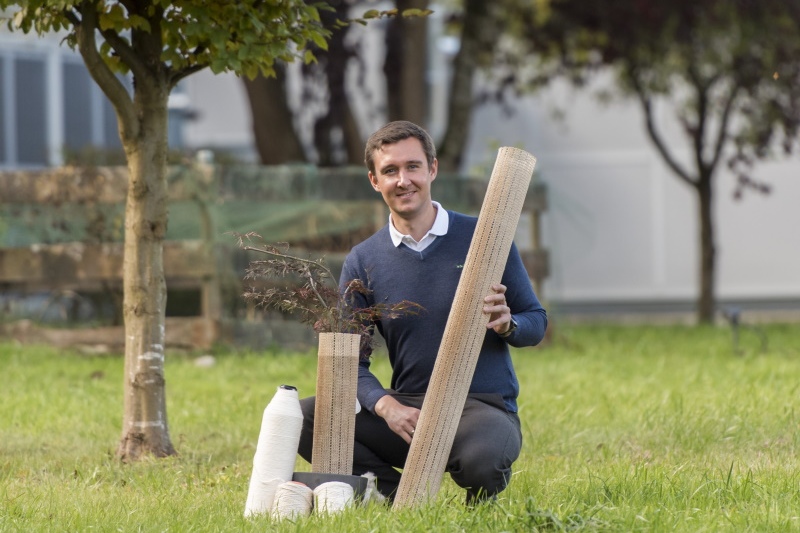
Development of biodegradable yarn for reforestation project
YarnsandFibers News Bureau 2021-12-07 13:59:46 – GermanyThe German Institutes of Textile and Fibre Research Denkendorf have created biodegradable yarns for use in reforestation project growth covers (DITF).
According to Stephan Baz, Head of Staple Fibre Technologies at DITF, growth covers keep game from eating the young plants and help to guarantee that they don't become choked out by other plants.
Plastic and metal covers on the market should be removed and collected after three to five years, however owing to overgrowth or because the cover has grown into the tree, this rarely happens or is no longer possible. As a result, every year, a large number of growth covers linger in German forests until they rust or are shredded into environmentally damaging plastic components by external forces. Despite the fact that bioplastics are manufactured from renewable raw materials, they are not biodegradable, do not degrade during use, and harm the environment.
Buck GmbH, situated in Bondorf, Germany, commissioned the DITF to develop a biodegradable yarn made from renewable raw ingredients. On a knitting machine, the yarn must be able to be transformed into a hard but malleable tube.
Trevira supplied free polylactide (PLA) and renewable natural fibers as starting ingredients for the hybrid yarn development. PLA is currently the only biodegradable thermoplastic accessible on a large scale and is made up of chemically linked lactic acid molecules. To avoid environmental damage from plasticizers or other additives, special care was taken to ensure that the PLA was pure.
Flax fibers were first employed as a source of renewable natural fibres. They were opened with the PLA staple fibers, combined, and processed into a fiber sliver in multiple sequential spinning preparation operations. To ensure rapid industrial implementation, a simple, widely used spinning process had to be used. On a rotor spinning machine, a roving frame, and a spiral covering spinning tester created at the DITF, spinning trials were conducted.
Finally, roving manufacturing on the roving frame was chosen because it creates a voluminous and robust hybrid yarn with suitable setting parameters and is extensively utilized by many spinning mills. Buck GmbH subsequently turned the hybrid yarn into a knitted cloth, from which the beam covers were created.
Cotton was subsequently used to replace the flax fibers in the hybrid yarn, as cotton is more flexible along the longitudinal fiber axis.
Market Intelligence
Ask for free sample Report

experience
Customer Base
dedicated team
Countries Served Worldwide









